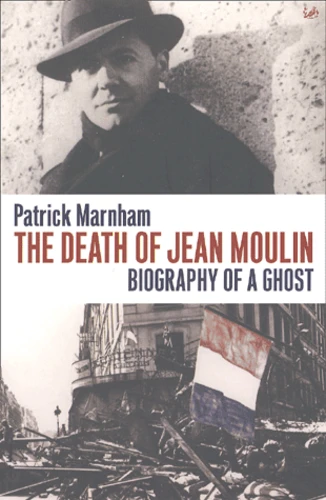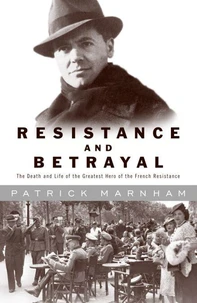The Death Of Jean Moulin. Biography Of A Ghost
Par :Formats :
Définitivement indisponible
Cet article ne peut plus être commandé sur notre site (ouvrage épuisé ou plus commercialisé). Il se peut néanmoins que l'éditeur imprime une nouvelle édition de cet ouvrage à l'avenir. Nous vous invitons donc à revenir périodiquement sur notre site.
- Paiement en ligne :
- Livraison à domicile ou en point Mondial Relay indisponible
- Retrait Click and Collect en magasin gratuit
- Réservation en ligne avec paiement en magasin :
- Indisponible pour réserver et payer en magasin
- Nombre de pages290
- PrésentationBroché
- Poids0.43 kg
- Dimensions15,0 cm × 23,0 cm × 2,4 cm
- ISBN0-7126-6584-6
- EAN9780712665841
- Date de parution03/04/2002
- ÉditeurPimlico
Résumé
Who was Jean Moulin? According to the official version, he was the exiled General de Gaulle's emissary to the French Resistance movements during the Second World War and became the political head of the Resistance in 1943. He was arrested in Lyons and tortured by the Gestapo, and is believed to have died a few days later without talking. After the war his ashes were transferred to the Pantheon - France's greatest honour - where his memory is revered beside that of Voltaire, Zola and Victor Hugo. So much for the legend. But what is the truth of Jean Moulin? Was he just a brave civil servant who volunteered to become a secret agent? Or was he, as some believe, a Soviet agent, a French Philby, working to promote a Communist insurrection in France? Did the national hero honoured in the Pantheon exist, or was he in large part a fantasy, deliberately created by the post-war Gaullist regime to heal Frances wounds and provide a rallying point for a nation which was sometimes on the verge of civil war? His story is full of unanswered questions. The time and the place of his death are unknown and even the identity of his ashes is uncertain. Ever since his disappearance arguments have raged in France about whether or not lie was betrayed by other Resistance leaders. Why should they have been suspected of betraying him? Patrick Marnham set out originally to write 'an uncontroversial biography of a very brave man' but uncovered a far more fascinating and ambivalent figure. His gripping piece of biographical detection summarizes the evidence as to who actually killed Jean Moulin and shows how an heroic legend was manufactured to take the place of an heroic life.
Who was Jean Moulin? According to the official version, he was the exiled General de Gaulle's emissary to the French Resistance movements during the Second World War and became the political head of the Resistance in 1943. He was arrested in Lyons and tortured by the Gestapo, and is believed to have died a few days later without talking. After the war his ashes were transferred to the Pantheon - France's greatest honour - where his memory is revered beside that of Voltaire, Zola and Victor Hugo. So much for the legend. But what is the truth of Jean Moulin? Was he just a brave civil servant who volunteered to become a secret agent? Or was he, as some believe, a Soviet agent, a French Philby, working to promote a Communist insurrection in France? Did the national hero honoured in the Pantheon exist, or was he in large part a fantasy, deliberately created by the post-war Gaullist regime to heal Frances wounds and provide a rallying point for a nation which was sometimes on the verge of civil war? His story is full of unanswered questions. The time and the place of his death are unknown and even the identity of his ashes is uncertain. Ever since his disappearance arguments have raged in France about whether or not lie was betrayed by other Resistance leaders. Why should they have been suspected of betraying him? Patrick Marnham set out originally to write 'an uncontroversial biography of a very brave man' but uncovered a far more fascinating and ambivalent figure. His gripping piece of biographical detection summarizes the evidence as to who actually killed Jean Moulin and shows how an heroic legend was manufactured to take the place of an heroic life.








